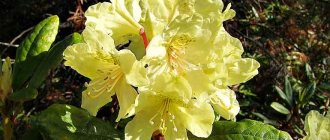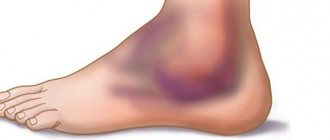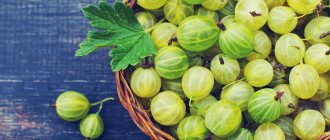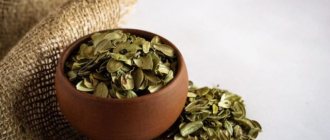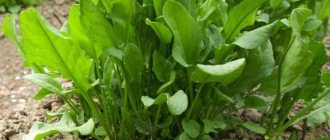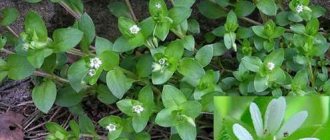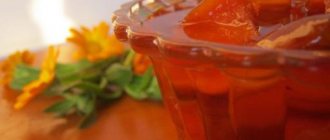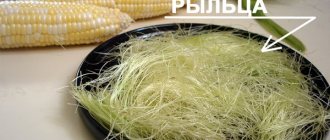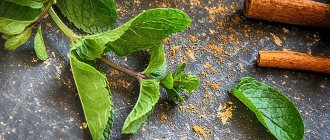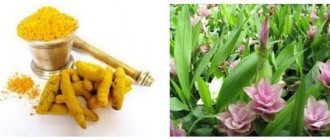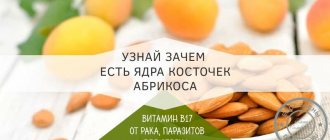What does a cornflower flower look like?
Cornflower is a herbaceous plant belonging to the Asteraceae family. Since ancient times, it has been considered a symbol of purity and innocence. It is often used during festive rituals. In nature, both perennial and annual forms of the plant are represented.
The straight stem of cornflower can reach 120 cm in height. Its root system is branched and fibrous. The length of the linear leaves is 5-7 cm. They are located alternately on the stem. They have small teeth along the edges and are covered with villi on top. In the root zone the leaves are smaller compared to those located at the top. Flower baskets can be lavender, white, purple, pink or red. The budding period begins in June and ends in September. You can see what cornflower looks like in the photo:
The plant tolerates both overwatering and drought well.
Comment! As a national symbol, the cornflower is especially valuable in Germany and Estonia.
Chemical composition of cornflower
Cornflower grass has a lot of medicinal properties. This is due to the rich composition. Thanks to it, the plant has powerful anti-inflammatory and diuretic effects. It is often used to treat diseases of the liver and biliary tract. Cornflower contains the following substances:
- flavonoids;
- glycosides;
- pelargonin chloride;
- tannins;
- minerals (copper, potassium, iron, magnesium, calcium);
- alkaloids;
- pectins;
- vitamins C and A;
- anthocyanins;
- coumarins;
- resin.
Due to the content of a large amount of tannins, the plant has a beneficial effect on digestion. Their effectiveness is increased by pectins. They speed up the process of food absorption by stimulating peristalsis. Flavonoids in cornflower remove toxic substances from the body and slow down the development of inflammatory processes. This allows it to be used to prevent serious diseases.
The minerals contained in cornflower are responsible for the strength of the skeleton and teeth. Due to anthocyanins, the plant strengthens blood vessels and has a bactericidal effect. Alkaloids, in turn, eliminate pain and prevent the development of cardiovascular diseases. Coumarins in the plant act as anticoagulants and have an antifungal effect.
Useful properties of cornflower
Only cornflower flowers are used to prepare infusions, decoctions and medicines.
The chemical composition includes: glycosides, centaurine, chicorin, dyes, cyanine, pelargonin. In addition, tannins, bitter substances, protein substances, mineral salts and saponins were found.
Cornflowers contain: serpentine, lochnerin, ajmalicin, vinblastine, vincamine, vincristine, leurosine, vitamin C, ursolic acid, carotene, flavonoids, rutin, bitter substances, saponins, tannins, sugar.
Cornflower flowers have the following properties: antimicrobial, anti-inflammatory, diuretic, choleretic.
Preparation of cornflower tincture: 1 tablespoon of dry, crushed plant is poured with 1 glass of water. Boil for 15 minutes, leave for 30-40 minutes, strain. Cool to room temperature. The infusion is stored for up to 2 days.
Take 1 tablespoon orally after meals in a warm form - it is used as a choleretic, mild diuretic and antimicrobial.
Decoctions and infusions of cornflower are used for: inflammatory and chronic kidney diseases, inflammation of the urinary tract, edema, urolithiasis, blepharitis, conjunctivitis, urethritis, cystitis, pyelitis, nephrosis, decreased vision, liver and biliary tract diseases. Helps resolve problems with the gastrointestinal tract.
Infusions of cornflower flowers are used for diseases of the bladder, kidneys, colds, as a mild laxative, as well as for malaria or as a disinfectant, anti-inflammatory property.
This plant is also used in the alcoholic beverage industry.
Dangerous properties of cornflower and contraindications
Do not take orally during uterine bleeding or pregnancy.
The plant is slightly toxic and has the property of accumulating hazardous substances in the body. It is necessary to take breaks when using medications or teas or tinctures.
If your body's condition begins to worsen while consuming them, you should immediately consult a doctor.
Tatyana Eliseeva chief editor of the Food+ project
Ask a Question
Rating:
0
/10
Votes: 0
Material usefulness 0
Reliability of information 0
Article design 0
How is cornflower useful and what diseases does it treat?
Cornflower is widely used in alternative medicine. It is famous for a number of useful properties. For medicinal purposes, mainly blue petals are used. They are distinguished by the content of hydrocyanic acid derivatives. Anthocyanins in the composition are no less important. They are what give the plant’s petals their rich blue color. They produce an antioxidant effect on the human body.
Sometimes cornflower petals are used in cooking for decorative purposes.
The medicinal properties of cornflower also include:
- antibacterial properties;
- strengthening the immune system;
- choleretic and diuretic effects;
- antipyretic effect;
- pain relief;
- diaphoretic action;
- calming effect;
- elimination of edema.
Cornflower has the ability to stimulate the production of gastric juice. Therefore, the plant is often used to treat diseases of the gastrointestinal tract. Thanks to its diuretic effect, the plant is effective against ailments of the genitourinary system. Cornflower is used externally for inflammation and irritation of the eyes. Women often use a herbal decoction for infectious gynecological diseases and to regulate the menstrual cycle.
The beneficial substances in the plant have the ability to accelerate regeneration processes. That is why they help cope with skin diseases. The plant is also widely used in cosmetology. It gives the skin elasticity and protects it from the harmful effects of the environment.
Attention! Cornflower belongs to the category of slightly toxic plants, the components of which can accumulate in the body.
Useful properties of cornflower for men
Cornflower is also good for men's health. A tincture prepared from its petals is used to increase potency. It improves blood circulation and eliminates inflammation in the prostate gland. As a result of treatment, sexual desire increases and physical endurance increases. The duration of the treatment course is at least 1 month. The beneficial properties of cornflower petals are also used to prevent cardiovascular diseases.
How is cornflower useful?
It is impossible not to mention the cleansing properties of cornflower. This plant is used for weight loss. Decoctions and infusions of cornflowers not only remove excess fluid from the body, but also promote fat burning. Drinking cornflower decoction helps improve digestion; as a result, fatty foods are broken down, and fats are not stored for future use, but are eliminated from the body. When consuming cornflower, waste, toxins and harmful substances are removed from the body.
Cornflowers are used for diseases of the genitourinary and excretory system. For edema of cardiac and renal origin, for nephritis, cystitis and urethritis, the diuretic property of cornflower has a positive effect. For diseases of the liver and gall bladder, cornflower is beneficial as a mild choleretic agent.
Cornflower is widely used for cosmetic purposes. The skin around the eyes, which is sensitive and lacks a layer of fatty tissue, responds favorably to masks and lotions made from cornflower. A delicate blue flower can restore radiance and shine to the eyes, eliminate puffiness, swelling and bags under the eyes. If, after prolonged stress, characteristic redness appears in the eyes, cornflower will save you. Cotton swabs soaked in cornflower decoction and applied to the eyelids for 15 minutes will eliminate the deficiency, the eyes will become rested, and the look will be fresh.
Cooking methods
In folk medicine, several methods of making cornflower-based medicinal products are practiced. It can be found in complex herbal preparations. The most common forms of medicine are cornflower tincture and decoction. It is often used in the form of an oil extract or tea.
Tincture
The medicinal properties of cornflower tincture are relevant for toothache and skin diseases. Compresses using tincture are excellent for swelling of the limbs.
Components:
- 20 g flowers;
- 300 ml vodka.
Cooking process:
- Dried inflorescences are placed in a glass bottle and filled with vodka.
- The medicine is infused in a dark place for 2 weeks.
- The drink is filtered before use.
- The tincture should be drunk 20-30 drops 3-4 times a day. It is first diluted in a small amount of water.
Dried flowers of the plant do not have a pronounced aroma
Infusion
Herbal infusion is often used as a choleretic and diuretic. In addition, it has a powerful immunomodulatory effect. When taken for preventive purposes, it prevents the development of viral and infectious diseases.
Components:
- 1 tbsp. hot water;
- 5 g cornflower.
Cooking steps:
- Dried flowers are poured with hot water, after which the container is covered with a lid.
- The duration of infusion of the medicinal product is 2 hours.
- The finished infusion is filtered and taken 60 ml 3 times a day. Take before meals.
The shelf life of cornflower infusion from the moment of preparation is 5 days
Decoction
Cornflower decoction is considered a traditional remedy. It is used for sore throat and bronchitis. The decoction quickly helps to cope with cough and eliminate inflammation. It is used as a lotion for conjunctivitis and blepharitis.
Ingredients:
- 1 tsp. cornflower petals;
- 30 g honey;
- 250 ml water.
Recipe:
- The raw materials are poured with water and put on fire.
- After boiling, the medicinal product is kept on low heat for at least 5 minutes.
- After removing from the stove, leave the broth covered for another hour.
- Before use, it is filtered and then honey is added.
To enrich the taste and beneficial properties, you can add mint to the cornflower infusion.
We recommend reading: Mint tea: beneficial properties and contraindications, how to make
Tea
Cornflower tea not only tastes good, but is also very beneficial for the human body. It normalizes water-salt balance and promotes the breakdown of fats. That is why the drink is often used for weight loss purposes.
Components:
- 1 tsp. green tea;
- 2 tsp. dried raw materials;
- 500 ml hot water.
Cooking steps:
- The components are mixed and placed in a teapot. Then the mixture is poured with boiling water.
- The infusion time for the drink is 5 minutes.
- You can add sugar or honey to it before serving.
We recommend reading: Tea with thyme: beneficial properties and contraindications
Cornflower petals can be found in aromatic tea mixtures
Oil
The oil is used to treat isolated skin rashes. It directs its action to the source of inflammation. In some cases, it is used during a massage.
Ingredients:
- 60 ml olive oil;
- 3 drops of vitamin E;
- 1 tbsp. l. cornflower petals.
Cooking process:
- Cornflower must be crushed using a blender or mortar.
- Oil and vitamin E are added to the resulting mass.
- Mix everything thoroughly.
The oil extract is sold in pharmacies in finished form.
Important! Tea made from cornflower petals can be used as a sedative.
The use of cornflower in folk medicine
The medicinal properties of the cornflower plant make it an indispensable means of folk therapy. It has a fairly wide spectrum of action. Very often the plant is combined with other medicinal herbs. It is used not only dried, but also fresh.
To stop bleeding
To stop bleeding, the plant is used together with horsetail. The components are mixed in the same ratio and poured with hot water. They are then simmered over low heat until the liquid has evaporated by half. The drink is taken 2 tbsp. l. each hour. To strengthen the therapeutic effect, use is continued for 2-3 days after bleeding has stopped.
For constipation
Cornflower infusion, prepared according to the classic recipe, can also be used to relieve constipation. It is taken 1 tbsp. l. 3-4 times a day. Take 15-20 minutes before meals.
To relieve eye fatigue
Cornflower blue decoction can be used to remove signs of fatigue from the eyes and strengthen blood vessels. A clean piece of gauze is soaked in it. It is applied to the eyes for 10-15 minutes. The compress helps relieve puffiness and eliminate bags under the eyes. The procedure also improves vision and relieves inflammation.
For hypertension
For hypertension, take a multicomponent decoction. It normalizes blood pressure levels, thereby improving a person’s well-being. To prepare it, mix the following ingredients in equal proportions:
- white mistletoe leaves;
- valerian root;
- chokeberry berries;
- cornflower;
- yarrow;
- horsetail;
- hawthorn fruits.
Recipe:
- The resulting mixture is poured with 300 ml of hot water.
- The medicine is infused for 30 minutes.
- It is filtered before use. Drink 70 ml of the product after each meal.
The maximum duration of taking the decoction is 1 month.
For a cold
Cornflower infusion is also effective when the first symptoms of a cold appear. It is recommended to take 1/3 tbsp. 3 times a day. The general course of treatment is 5-7 days. Taking the infusion helps strengthen the immune system and protect the body from viruses.
In case of liver dysfunction
Thanks to its antioxidant properties, cornflower effectively cleanses liver cells. For these purposes, use a tincture. A single dosage is 30 drops. Take 3 times a day 20 minutes before meals. The duration of treatment depends on how advanced the disease is.
Advice! Before using cornflower, it is advisable to consult with your doctor.
Helpful information
Cornflower color is not used in large quantities. Healers recommend adding a small pinch of petals when preparing a medicinal mixture. This is called “salting” with cornflower.
The infusion is prepared according to the standard recipe
- Take 1 teaspoon of dry petals and a glass of boiling water.
- Pour the color into a porcelain bowl, add hot water and cover.
- Place the cup in a container of water and heat over medium heat for 15 minutes.
- Cool for 45 minutes, strain and make up to 200 ml volume with warm water.
Take 1 tablespoon 3 times a day as a mild choleretic, diuretic or antimicrobial agent. For a more intense therapeutic result, before starting to use infusions, you should consult with your doctor.
Cosmetic oil
- Fill a small dark glass container with fresh petals and pour warm sunflower oil over everything.
- Seal tightly with a lid and leave in the refrigerator for 10 days.
- Store in the refrigerator for 6 months.
This oil is not recommended for use on the face - it has a pungent odor. But you can cure inflamed acne on the back (lubricate it) and get rid of cracked heels (make compresses).
Application in cosmetology
- Cornflower decoction and tincture are used to care for oily skin of the face and scalp, as well as to combat dandruff.
- To get rid of excess fat on the face, you need to wipe the skin with alcohol tincture (dilute with water 1:1).
- Lotions with cornflower extract smooth the skin, reduce enlarged pores, and eliminate inflammation. The mattifying effect of their use lasts all day.
- Cornflower extract is included in creams for the care of the skin around the eyes. Creams gently care for eyelids, relieve swelling and swelling.
- Cotton swabs soaked in cold broth will also help relieve swelling from the skin around the eyes.
- Essential oil from this flower restores collagen and elasticity of facial skin, removes crow's feet around the eyes. Can also be used for soft makeup removal.
- An infusion of flowers is rubbed into the scalp or used to rinse hair.
- Rubbing with the infusion helps improve the condition of dry skin on the hands, neck and décolleté.
Other Applications
- The petals are used as a dye for champagne (pink).
- The aroma of cornflower contains notes of mint, cloves and lemon, so in cooking it is used as a seasoning for meat. Vanilla is perfect for sweet dishes.
- Honey from cornflower flowers has a greenish tint and a bitter taste, vaguely reminiscent of almonds.
Application in cosmetology
Cornflower extract can be found in many cosmetic products. It reduces swelling and has a rejuvenating effect. At home, anti-aging masks are prepared from it. They perfectly strengthen blood vessels and soothe irritated skin. A decoction of cornflower acts as an effective tonic lotion. They are advised to wipe their skin before going to bed. The most valuable properties of cornflower in cosmetology include:
- disinfection of the skin;
- narrowing of pores;
- getting rid of dandruff;
- smoothing wrinkles;
- elimination of swelling;
- removing dark circles under the eyes.
Contraindications
The beneficial properties of blue cornflower do not exclude the presence of contraindications. These include:
- individual intolerance;
- period of lactation and childbearing;
- uterine bleeding;
- age under 12 years.
When using the plant for medicinal purposes, caution should be exercised by elderly people and those prone to allergic reactions. It has a mild degree of toxicity. The plant contains substances that can accumulate in the body. The possibility of combining cornflower with medications should be checked with your doctor on an individual basis.
If any side effects occur, you must stop taking it. The most common of these is an allergic reaction. It is accompanied by skin rash, dizziness and itching.
Pharmacological properties
Blue cornflower flowers contain:
- tannins;
- cyanogenic and pigment glycosides;
- flavonoids;
- alkaloids;
- vitamins C and A;
- minerals.
The plant does not have a pronounced toxic property.
Traditional medicine recommends treatment with herbal mixtures, which include cornflower flowers, for diseases of the liver and genitourinary system.
Healing flowers are included in many medications that have diuretic, antipyretic, and antibacterial effects. In addition, blue meadow flower:
- normalizes digestion;
- eliminates pain;
- accelerates wound healing;
- removes parasites from the body.
Collection and preparation
The medicinal plant is collected during the flowering period - from June to July. Tubular and marginal flowers are collected from the flower basket. Drying is carried out at a temperature of 40-50 °C. The procedure is performed in the shade, with free access to air. To ensure that moisture evaporates evenly, the raw materials should be constantly turned over. The dried plant has no odor. The moisture content of the finished product should not exceed 14%. Dried cornflower is stored in glass jars equipped with tight lids. The shelf life, if all conditions are met, is 2 years.
Comment! Cornflower tea is useful to drink for increased irritability and insomnia.
